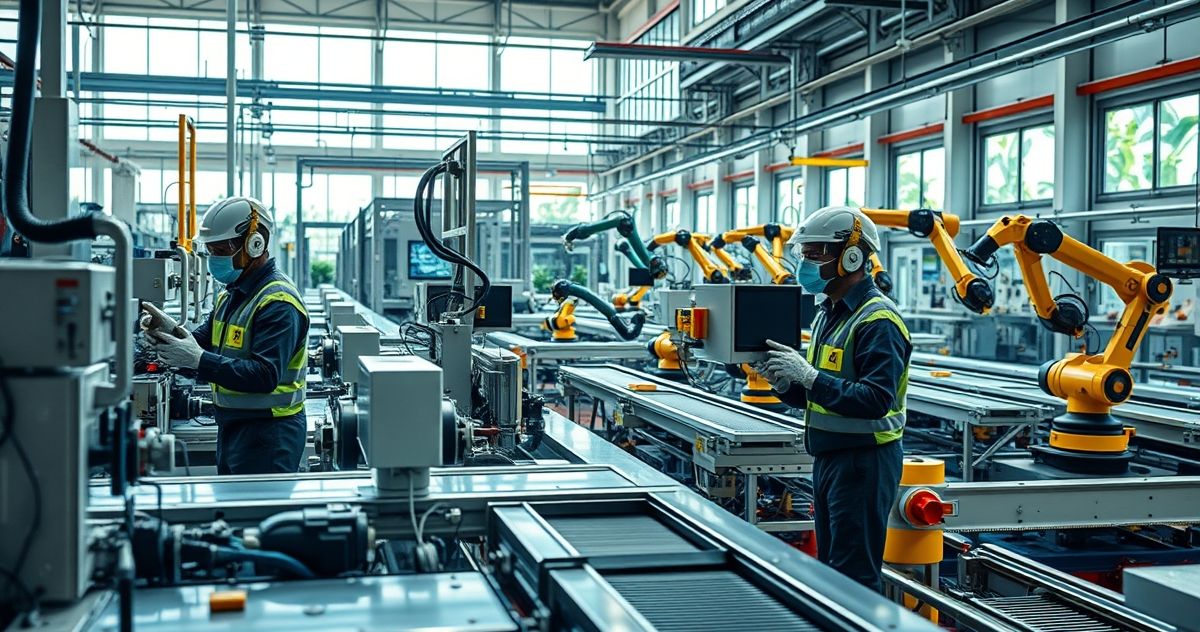Understanding the State Manufacturing Investment Credit
The State Manufacturing Investment Credit (SMIC) is a pivotal financial incentive designed to bolster the manufacturing sector within various states. Essentially, it is a tax credit extended to manufacturers who make investments in designated manufacturing assets. The primary purpose of the SMIC is to drive economic growth, encourage modernization, and enhance competitiveness within the manufacturing industry by offering financial relief in the form of tax credits for eligible investments.
What It Is and Its Primary Purpose
At its core, the State Manufacturing Investment Credit aims to stimulate economic activity within the manufacturing sector by reducing tax liabilities for companies that invest in machinery, equipment, and other qualifying assets necessary for their operations. By doing so, states aim to attract more businesses, promote industrial development, and maintain competitiveness in an ever-evolving global marketplace.
The credit often applies to both new and used tangible personal property that is acquired or constructed within the state for manufacturing purposes. This stipulation ensures that local economies benefit directly from increased investment activities.
Key Features or Components
- Eligibility Requirements: To qualify for the SMIC, a company typically must be involved in manufacturing activities as defined by the state statutes. This might encompass a variety of activities, from production and assembly to processing and fabrication.
- Qualifying Investments: Investments that qualify for the credit usually include machinery, equipment, software, and sometimes research & development expenditures. The specifics may vary by state, underlining the importance of understanding each state’s particular criteria.
- Credit Limitations: States often set limits on the amount of credit a business can claim within a tax year. These limits might be based on a percentage of eligible investment costs or capped at a specific dollar amount.
- Carryforward Provisions: Many states provide carryforward provisions, allowing businesses to apply unused credits to future tax years if they exceed current year liabilities.
Relevant Filing or Compliance Requirements
Compliance with the State Manufacturing Investment Credit involves meticulous adherence to state-provided guidelines. Businesses typically must provide detailed documentation to verify their eligibility and the legitimacy of claimed investments. This often includes invoices, contracts, and proof of payment for qualifying assets.
Filing for the credit usually requires completing designated forms and schedules as part of the state income tax return. Businesses must ensure that they accurately document their eligibility and the amount claimed, typically supported by detailed records of the manufacturing assets for which the credit is claimed.
Penalties or Consequences for Non-Compliance
Non-compliance with the SMIC requirements can lead to significant penalties. Common consequences include the disallowance of claimed credits, resulting in additional taxes owed, along with interest and penalties. Repeat offenses or substantial non-compliance might attract more severe penalties, including audits and further scrutiny of the taxpayer’s future filings.
Businesses must thus remain vigilant in maintaining detailed documentation and ensuring that their tax filings accurately reflect their eligibility and the credit claimed.
Importance in Tax Resolution and Financial Compliance
The State Manufacturing Investment Credit plays an indispensable role in strategic tax planning and compliance for manufacturing companies. Utilizing this credit can substantially lower a company’s state tax liability, freeing up funds for reinvestment, expansion, or other strategic initiatives. This promotes economic growth within the state and enhances the competitive position of the manufacturing sector as a whole.
From a tax resolution perspective, securing the SMIC offers businesses the scope to better manage cash flow and financial obligations by leveraging available credits. This strategic advantage can be particularly beneficial in capital-intensive industries, where funding for new technologies and improvements is crucial to maintaining an edge in efficiency and productivity.
Overall, the State Manufacturing Investment Credit not only supports individual manufacturers but also contributes to the broader financial health and competitiveness of the state’s economy. By thoroughly understanding and optimizing the use of available tax credits, companies can ensure compliance while maximizing their financial leverage and industry position.

